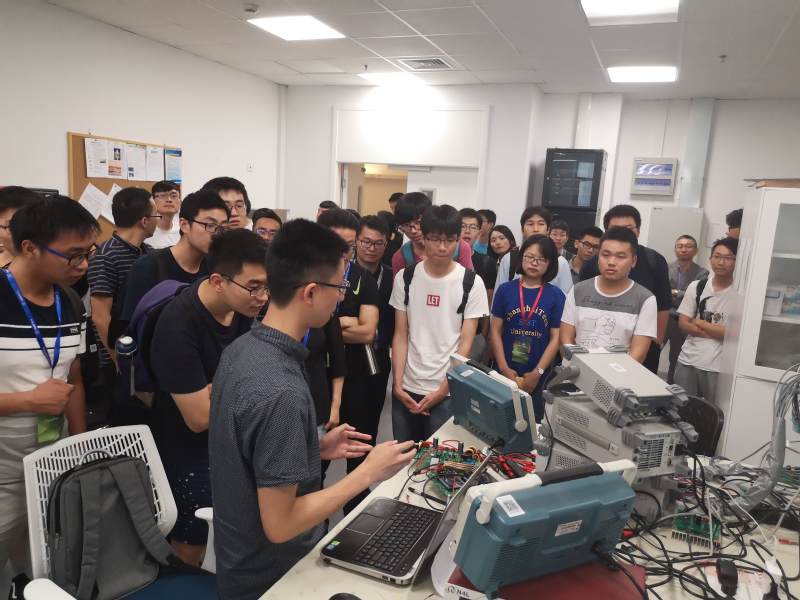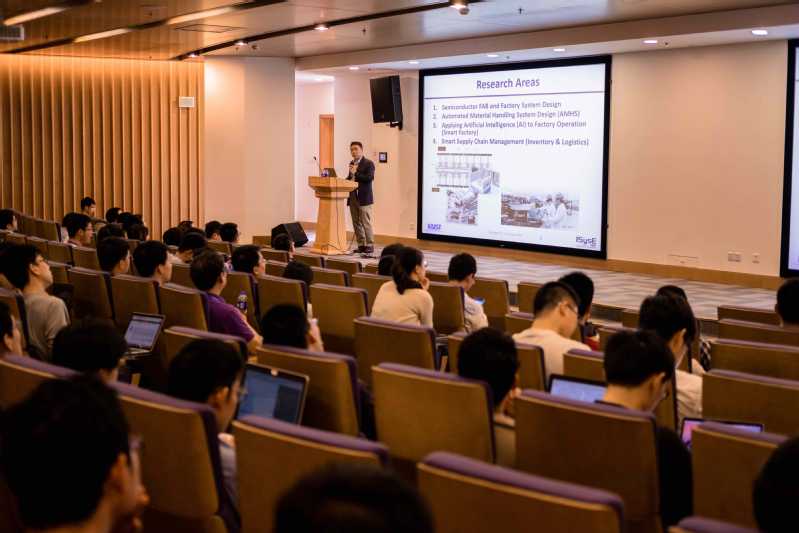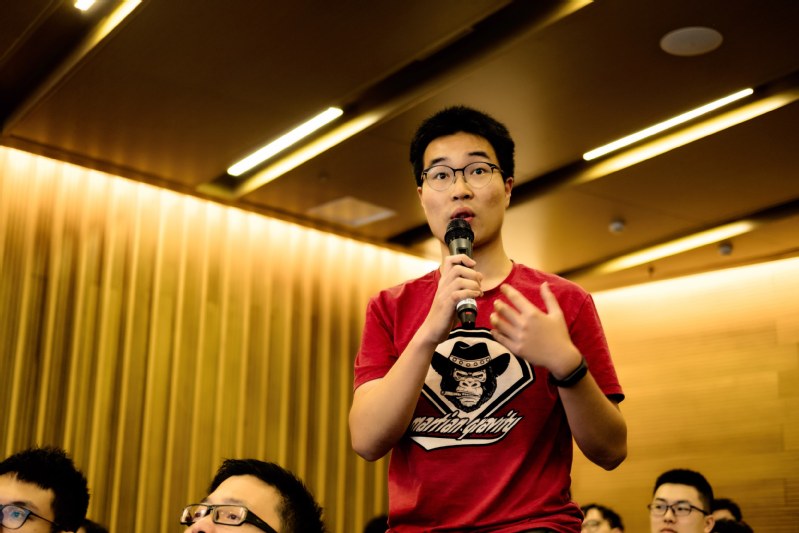On June 4th and 5th, ShanghaiTech hosted SWEDCS 2018, offering a platform for top scientists and experts in emerging devices, circuits and systems to share their research results and inspire next-generation talents in all areas of information science and technology. SWEDCS 2018 focused on the theme of “Internet of Things” (IoT), and included a technical program covering four sessions in electromagnetic imaging and sensing, optical electronic devices, IoT systems, and wireless power transfer. The workshop attracted more than 200 attendees from across the country. Provost and Vice President Professor Yin Jie, and Vice Dean of School of Information Science & Technology Professor Yu Jingyi, gave welcoming remarks. Professor Alberto L. Singiovanni-Vincent (Member of US National Academy of Engineering) from UC Berkeley, Professor Lihong V. Wang (Member of US National Academy of Engineering) from CalTech, and Professor Wayne Luk (Fellow of Royal Academy of Engineering) from Imperial College were keynote speakers for the 26 talks that spanned the two-day program of 26 talks in total.
The academic program of the workshop began with the “Electromagnetic Imaging and Sensing” session and an informative keynote speech from Professor Lihong V. Wang.Professor Wang is currently the Bren Professor of Medical Engineering and Electrical Engineering at the Andrew and Peggy Cherng Department of Medical Engineering at CalTech. He is a member of the US National Academy of Engineering and a fellow of IEEE, OSA, SPIE, and AIMBE. In his presentation, he showed that the depth of photoacoustic tomography can be largely enhanced by wavefront shaping technique to obtain information deep inside biological samples, beyond the ability of conventional photoacoustic imaging. The most impressive images Professor Wang exhibited were several photoacoustic images obtained from volunteer patients, which clearly depicted complicated blood vessels and tumors inside human breasts with proper depth information labeled in different colors. He also shared us the latest progress on the fastest camera in the world developed by his group using compressive sensing technique. Several attractive animations illustrated the interaction of light with matters captured by this magic camera, such as reflection, refraction, racing of light beams in two materials, absorption, and optical Mach cone. A junior student Sun Yifei from SIST raised a very technical question to Professor Wang regarding the comparison of several parameters of photoacoustic imaging and thermoacoustic imaging. Professor Lalita Udpa (IEEE fellow) from Michigan State University showed their work on utilizing perfect microwave metamaterial lens for super-resolution near-field imaging and detection. Professor Song Liang from Shenzhen Institutes of Advanced Technology shared their latest work on multimode modality integrating photoacoustic imaging, fluorescent imaging, and ultrasound imaging. Professor Zheng Yuanjin from Nanyang Technology University talked about low-frequency electromagnetic-acoustic imaging mechanism and measurement of blood oxygen and blood glucose by photoacoustic sensors. Professor Nie Liming from Xiamen University discussed his research on photoacoustic tomography of animal heart in vivo.
The afternoon session “Optical Electronic Devices” began with an invited talk from Professor Kuo Haochung of Taiwan ChiaoTung University. He mainly shared with the audience his research results about blue, green microLEDs. Professor Kuo and his team used GaN microrods and MOCVD growth technique to obtain controllable green LED array based on rod-sidewall emission, which would help mitigate green gap, a notorious phenomenon about efficiency drop in the green and yellow regions. Professor Kuo also demonstrated colorful GaN microLED using quantum-dots materials and color conversion based on photoluminescence. In the end of his presentation, Professor Kuo discussed fabrication details of microLEDs, and the difference of implementation of the active microLED array and passive microLED array. Professor Johann Peter Reithmaier of the University of Kassel, Germany reported thermal-stable semiconductor devices based on quantum dot gain materials. The devices developed in Professor Reithmaier’s group included directly modulated laser diodes, semiconductor optical amplifiers (SOA), and widely tunable narrow linewidth lasers, all of which are key devices and fundamentally important to coherent communications. Professor Hu Weida of Shanghai Institute of Technical Physics, CAS, explicitly reported his design and device results of Infrared photodetectors based on 2D-materials. Director Deng Jiangdong of Harvard University introduced precious experience accumulated during the design, construction, maintenance, and management of the cleanroom environment in Harvard University. Professor Liu Lei from Notre Dame University reported the implementation of tunable and reconfigurable mmw-teraherz devices and their applications in imaging and adaptive communications. Professor Wang Zheng brought to the audience an impressive talk about on-chip conversion between optical waves and acoustics. Professor Alan Xiaolong Wang from Oregon University demonstrated a hybrid Si-TCO nanocavity modulator, which holds superior merits including low optical loss, high E-O efficiency, and low energy consumption.
The second day’s program began with a keynote speech addressed by Professor Alberto L. Sangiovanni-Vincent, reviewing a number of exciting fields such as Industry 4.0, energy efficiency, synthetic biology, autonomous aircraft and cars where advances are constantly made towards the mastering of distributed, autonomous systems. The third keynote speech was given by Professor Wayne Luk from Imperial College, also a Fellow of Royal Academy of Engineering. His talk covered recent research on field-programmable technology and machine learning and described how such research can lead to advances in reconfigurable systems that can support improvements in both performance and reliability. Professor Luk demonstrated several of their custom computing examples, including an accelerator for on-board hyperspectral image classification, and a run-time monitoring system. Professor Xu Li Da’s talk outlined the current research of IoT, key enabling technologies, major IoT applications in industries, and identified possible research trends and challenges. Professor Zheng Lirong presented the low power design of CMOS chipset for the sensor to cloud interconnections, through trade-offs for computing, communication, and circuits. Professor Shi Yiyu systematically discussed the representation power of quantized neural networks. He proved the universal approximation of quantized ReLU networks and provided an upper bound of storage size given the approximation error bound and the bit-width of weights. As the last speaker of the morning session, Professor He Lei presented the recent research work of AI Chips for IoT Edge Devices. The group of Professor Zhang Xiaolin from Shanghai Institute of Microsystems has introduced the recent developments in bionic vision systems, and demonstrated with a lot of application videos that their group has developed in various scenarios. Kneron Inc. founder Dr. Albert Liu introduced a reconfigurable CNN accelerator they have developed, and demonstrated a Chinese-English bi-directional conversation translation application. Professor Zhu Qi introduced a cross-layer modeling, simulation, synthesis and verification framework for connected vehicle applications, with timing and security as the major challenges.
Beside IoT session, there was a parallel session named on Wireless Power Transfer (WPT). This year the WPT session was co-organized by ShanghaiTech Center for Advanced Power and Energy Systems (CAPES) and IEEE Industrial Electronics Society Shanghai Chapter. Five speakers from the United States, Japan, Korea, Macau, and Mainland China were invited to give five wonderful technical talks on WPT. About 150 students and professionals from both academia and industry attended this session. The session was well organized and highly evaluated by both the speakers and audiences.
Following the success of SWEDCS ’16 and ’17, SWEDCS 2018 featured the workshop as a regional influential platform for researchers from both academic and industrial community to share their expertise and inspire each other. The SWEDCS 2018 couldn’t have been put on without the support from our organization partner, the Expert Center of Chinese Ministry of Industry and Information, and the corporate sponsorship from 15 international and domestic companies.









